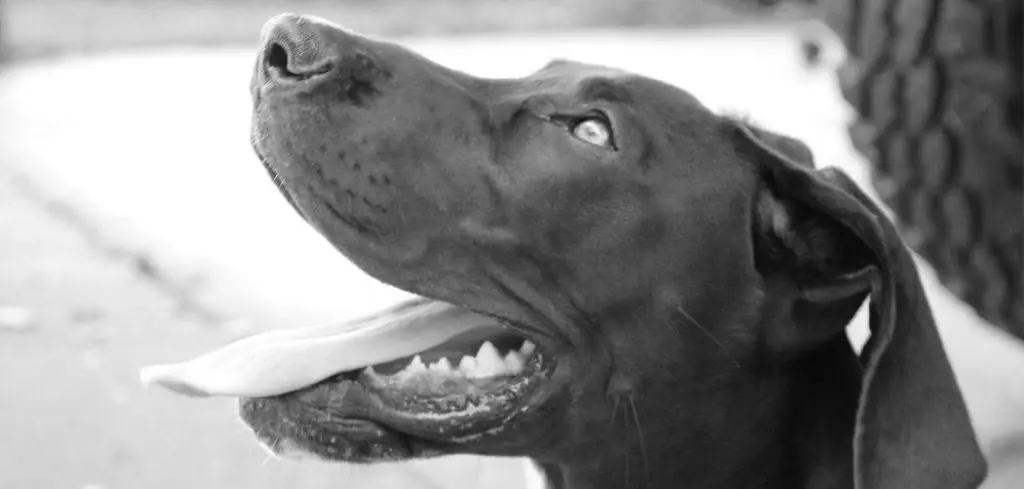It can be unsettling to see your dog panting heavily every time they get in the car.
Whether you’re headed to the vet or out on an adventure, excessive panting can a more serious medical concern.
We outline the common causes of a dog panting excessively in car, what you can do at home, and when to seek veterinary help.
Dog Panting Excessively in Car — Why It Happens
Excessive panting in the car is most often a response to stress, heat, motion sickness, or an underlying medical condition. Dogs can become anxious due to past negative car experiences or simply the unfamiliar motion and noise.
Hot vehicles can quickly lead to overheating, while some dogs experience nausea from movement. Conditions like heart or respiratory disease can also make panting worse in a stressful or warm environment.

Common Causes of Dog Panting Excessively in Car
Anxiety and Car Phobia
Many dogs associate car rides with anxiety. This can stem from past trauma, trips to the vet, or the overwhelming stimuli of motion, sights, and sounds.
Panting is a classic symptom of stress in dogs and may be accompanied by whining, trembling, or trying to escape the vehicle.
You might also notice your dog refusing to enter the car or becoming rigid once inside.
This type of stress-induced panting can be intense and consistent throughout the ride.
Read more: Dog Panting Excessively for No Reason (Here’s why)
Heat and Poor Ventilation
Cars can heat up quickly, especially in warmer weather. Even with the windows cracked, the internal temperature of a car can rise fast, putting your dog at risk of overheating or heatstroke.
Panting is a dog’s primary method of cooling themselves down. When they can’t cool down effectively, panting becomes more intense. This is a medical emergency if not addressed quickly.
Look for other signs of heat stress like drooling, red gums, and lethargy.
Motion Sickness
Just like people, some dogs experience motion sickness. This discomfort can cause panting, drooling, nausea, and vomiting.
It’s more common in puppies and young dogs, but some dogs never outgrow it.
If your dog pants excessively and seems queasy or avoids eating before rides, motion sickness may be the culprit.
Respiratory Conditions
Dogs with underlying respiratory issues like brachycephalic airway syndrome, tracheal collapse, or laryngeal paralysis may pant excessively, especially in stressful or hot environments like a car.
The restricted airflow from these conditions is exacerbated by warm, confined spaces.
You may also hear noisy breathing, coughing, or signs of fatigue alongside panting.
Heart Disease
Cardiac issues can cause your dog to have difficulty regulating their breathing and body temperature, especially under stress.
A dog with heart problems may become short of breath, pant heavily, and show signs of weakness or collapse after or during a car ride.
Dogs with heart disease often pant at night or after minimal exertion as well.
Read more: Dog Panting Excessively (Here’s why)
Excitement or Anticipation
Some dogs simply get excited in the car because it means a trip to the park or an outing. This excitement can trigger adrenaline, which raises the heart rate and causes panting.
You may see tail wagging, jumping, or vocalizing along with the panting. While not dangerous on its own, this can mask more serious issues if it becomes extreme.
What to Do If Your Dog Is Panting Excessively in Car
Start by evaluating the car environment. Make sure it’s cool and well-ventilated. Use air conditioning or fans to prevent overheating. Never leave your dog in a parked car, even briefly.
If anxiety seems to be the root cause, begin desensitization training. Take short, positive trips that don’t end at the vet. Use treats and praise to create new associations with car rides.
Motion sickness may improve with time, or your vet might recommend anti-nausea medication. Feeding your dog a few hours before travel can also help reduce symptoms.
If panting continues despite environmental changes or training, consult your vet to rule out respiratory or heart conditions. Bring a video of the behavior if possible.
Some dogs benefit from calming aids like pheromone sprays, anxiety wraps, or even prescription medication for severe stress.
When to Call or Visit Your Vet
If your dog’s panting is paired with other symptoms like drooling, vomiting, collapse, or disorientation, seek veterinary help immediately.
Panting that starts suddenly or becomes more intense than usual may indicate an underlying health issue.
If your dog pants excessively even in a cool car, seems distressed, or has a history of breathing or heart problems, don’t delay evaluation.
Ongoing anxiety or motion sickness that doesn’t improve with training or mild intervention should also be addressed.
Read more: Dog Panting Excessively After Walk (Here’s Why)
Key Takeaway
Excessive panting in the car is not something to ignore — whether it’s stress, heat, or a health condition, your dog is trying to tell you something.
Create a safe, cool, and comfortable environment for travel, and pay close attention to your dog’s behavior.
If the panting is frequent or severe, speak with your vet to make sure there’s nothing more serious going on.
With the right care and adjustments, most dogs can learn to enjoy car rides — or at least tolerate them without stress.
